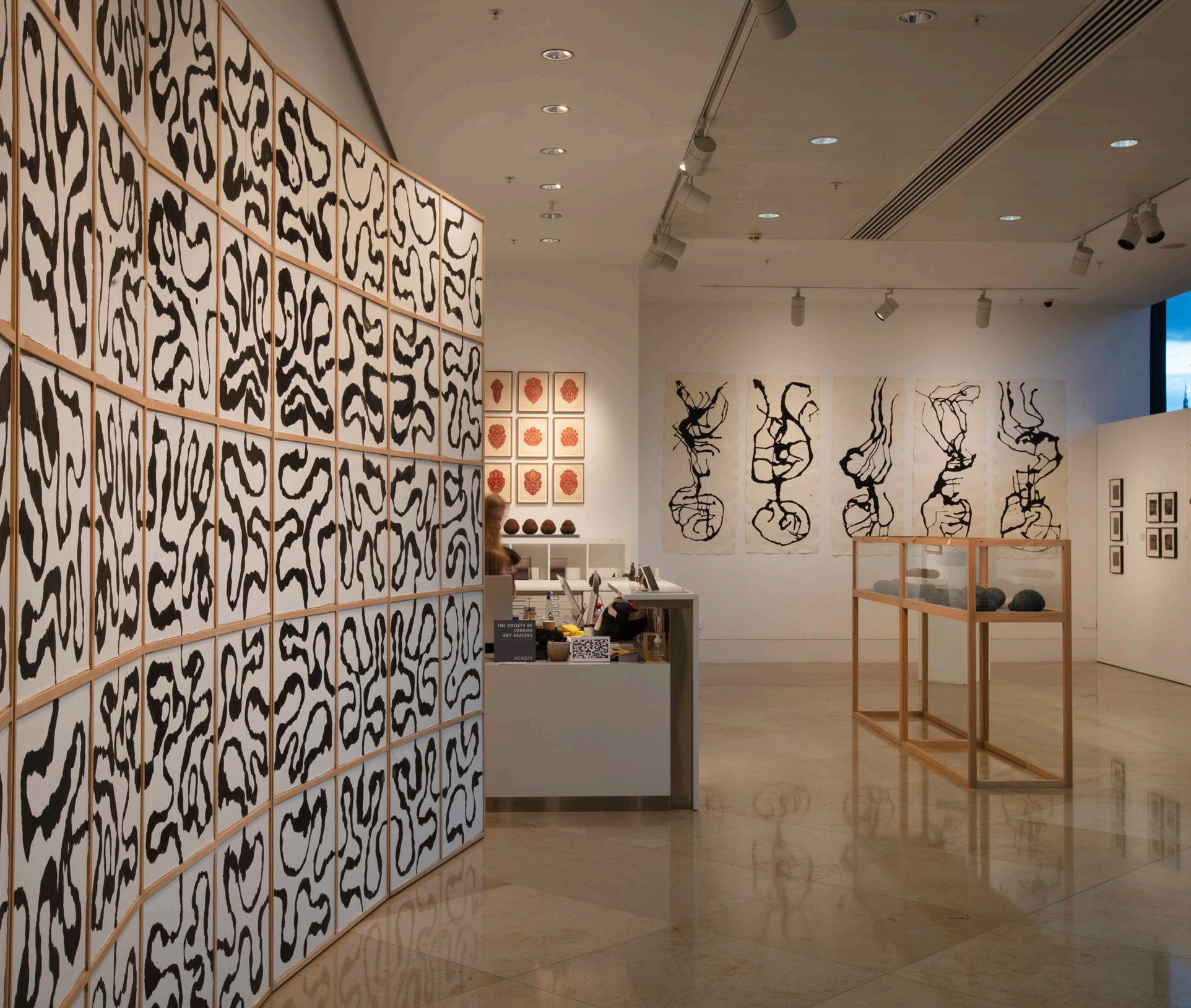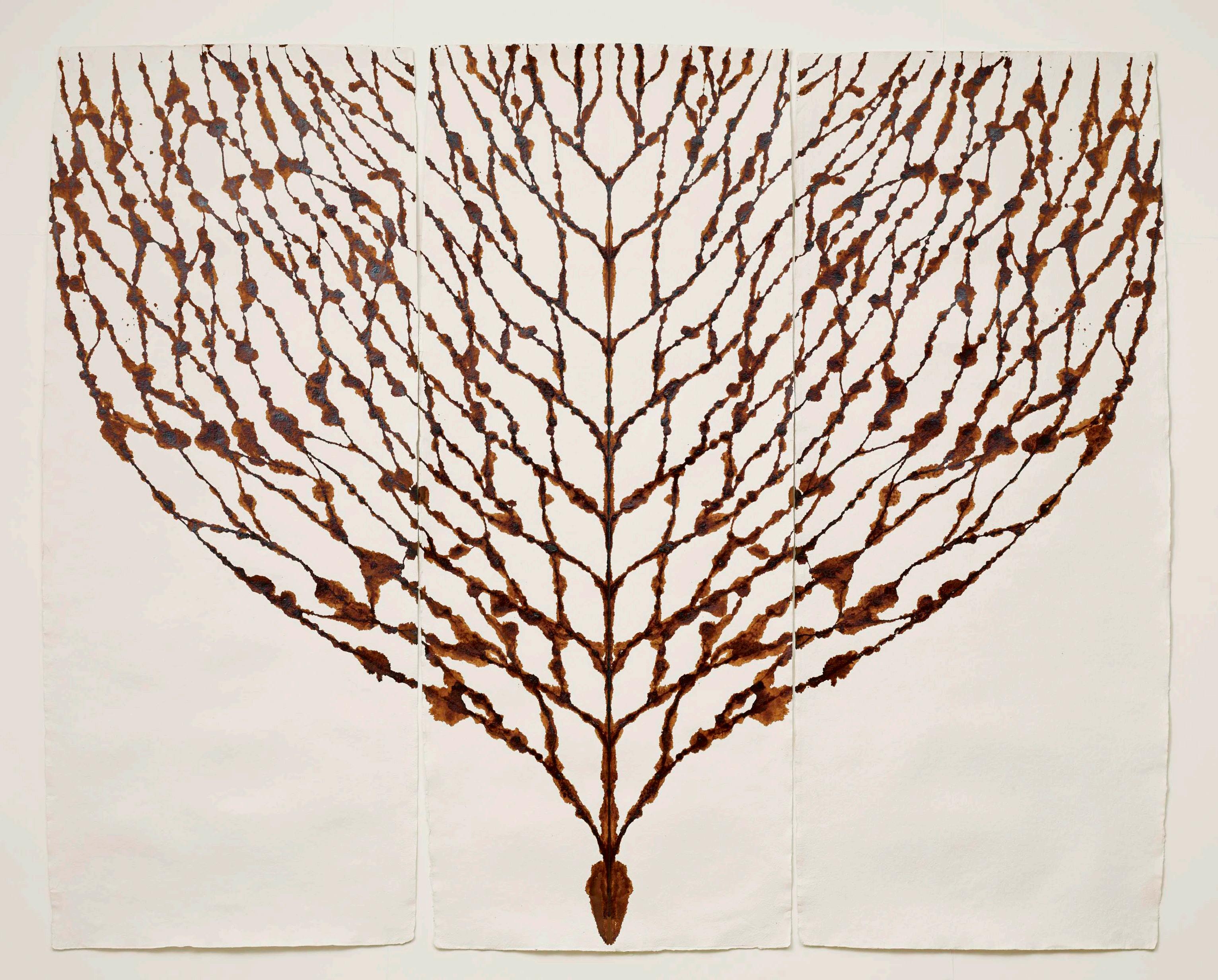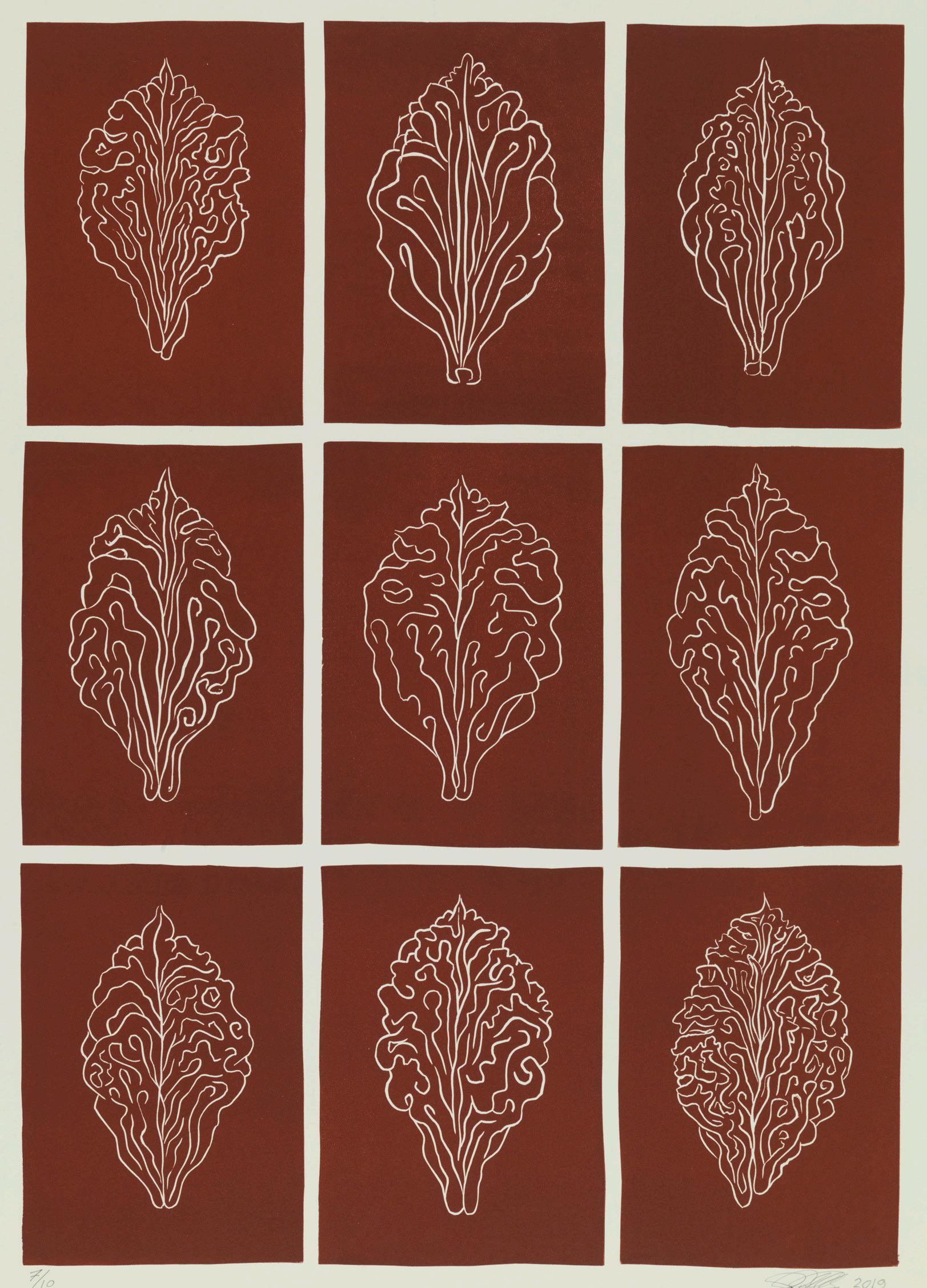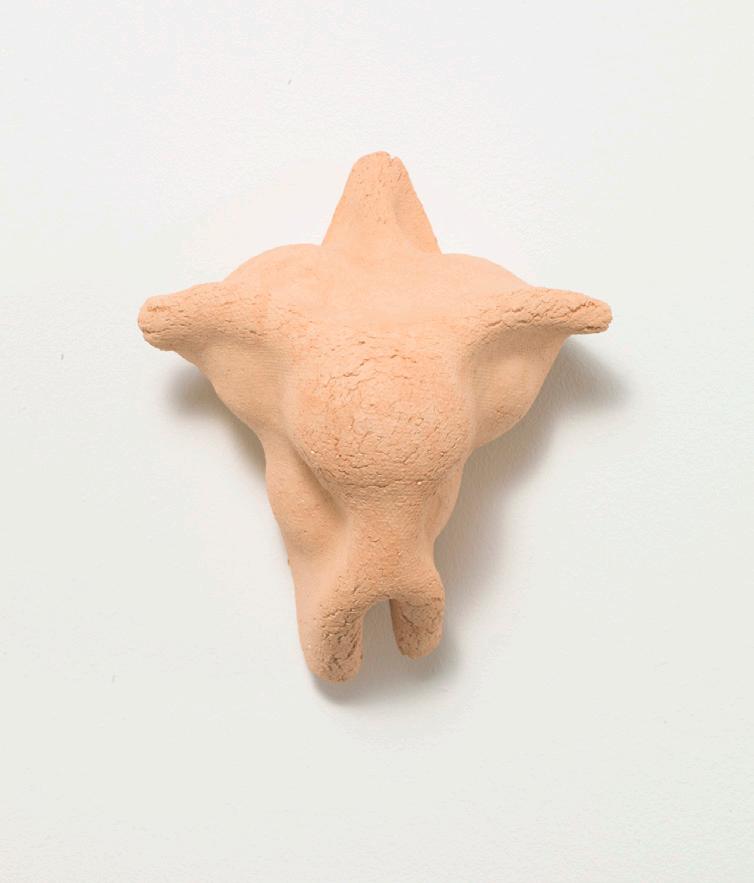PETER RANDALL-PAGE PANGOLIN LONDON

(left) Installation shot of Peter Randall-Page at Pangolin London, November 2022


(left) Installation shot of Peter Randall-Page at Pangolin London, November 2022
PB: This exhibition brings together a rich and varied body of work in a variety of media and scale. What inspired your selection?
PRP: Early in 2022 I was invited by Rungwe Kingdon and the team at Gallery Pangolin in Gloucestershire to put together a retrospective exhibition of maquettes, small sculptures and prints spanning almost five decades. The gallery at Pangolin, Gloucestershire is relatively domestic in scale which was ideally suited to a show of small objects and prints. Subsequently, Pangolin London expressed an interest in bringing the show, or a modified version of it, to Kings Place, which is a very different kind of space, bigger, taller, and lighter with one side entirely glass. Selecting the show in Gloucestershire was an interesting exercise for me, and with the benefit of hindsight I was able to identify themes and strands that are still engaging to me.
The show in London is very different mainly because of the space itself. It is in no way a retrospective, but it does draw on work from several decades alongside new work shown for the first time. The criteria in choosing what to include was simply the things that continue to excite me.
PB: The monumental Rorschach Screen is being shown for the first time in London and takes up almost the entire back wall of the gallery. Can you tell us a little bit about it?
PRP: Hermann Rorschach must have been aware of the emotional subjective power of bilaterally symmetrical shapes when he developed his famous “Ink Blot” psychoanalytical test in the early years of the twentieth century.
Mirror image symmetry impacts and stimulates our sense of meaning and expression on a fundamental level for the simple reason that we are so highly attuned to reading facial expression. It is fundamental to communication and predates language in human evolution and speech in infant development. It is something that we share with primates and many mammals so it runs very deep in the human psyche. We tend to read any shape with vertical symmetry in terms of faces and bodies and as such this kind of symmetry is a powerful expressive tool for an artist. A totally random ink blot when reflected vertically in this way takes on expressive importance, encouraging the brain to conjure feelings which emanate primarily from the preoccupations of the viewer’s mind, reading things into the randomly generated shapes.
Ambiguity can be a powerful tool in awaking the viewer’s perception through an awareness of the cognitive process taking place. I hope this has the effect of questioning our preconceptions and enlivening an awareness of our own subjectivity.
My intention with Rorschach Screen was to “take a line for a walk” in a spirit of improvisation within the bounds of two simple rules: - Firstly, each of the sixty squares of paper have a mirror image partner, created by pressing a blank piece of paper onto one with wet ink, in the manner of Rorschach. The second rule is that the line must enter and exit in the middle of adjacent sides of each square without crossing itself or another line. The result is alternate panels of symmetry, interspersed with panels which are not symmetrical but where the line still enters and exits in the middle of each side.
I wanted to make a drawing which hovers somewhere between order and randomness, where an initial impression of chaos is gradually supplanted by order as the brain searches for repetition and pattern.
PB: Many people will know you for your impressive public commissions like The Seed and The One and The Many. In contrast, the exhibition includes a beautiful series of intimate carved pebbles called A Little Bit of Infinity which may surprise viewers for their scale. Have you always worked on smaller pieces throughout your career or is it a more recent development?
I have always worked on a small scale, both in the form of maquettes, and as sculptures in their own right. For me, there are three classes of scale for sculpture: - Architectural scale, in relation to the built environment or landscape. Body scale, objects which occupy our own human scale and relate directly to the ground and our own bodies. And hand scale, things that can be held and turned in the hand.
During the covid lockdown I worked alone using small stones that I have collected over the years. Using only hand tools, these little meditations on line and form became the ‘infinity’ series of small carvings in the show. They are almost all predicated on the simple idea of one continuous line traversing a form creating two territories. For me they are a kind of microcosm, an endless line traversing a boundless form is like ‘a little bit of infinity’.
PB: The exhibition includes a number of cast pieces whether in bronze, silver or iron and the Playing God series are particularly striking. How do you enjoy the difference in process and what tends to drive whether a piece is cast or carved?
PRP: A few of the bronze and iron casts in the show were taken directly from wax or clay maquettes, but most of the more recent casts tend to be small sculptures in their own right, which are either unique, using the lost wax process, or in very small editions. This way of working with clay or wax grows directly from the inherent properties of each material. They tend to be made quite quickly, a process which requires editing, either they work first time or are discarded, and the material recycled. I try to retain a sense of spontaneity, squidging and squeezing the material in my hands. It is a one-hit process in which gesture and expression are paramount.
Consequently, I tend to make these small sculptures in series, like variations on a theme, building an expressive vocabulary, by virtue of comparison with their siblings. This same approach applies
(right)
Installation shot of Peter Randall-Page at Pangolin London, November 2022


to the Playing God works but on a larger scale. These two iron casts are part of an ongoing series with its genesis in the 1970’s, when, as a student I made something similar using mud and straw on a very basic armature (a stick in the ground). The title alludes to creation stories from many diverse cultures in which Gods and Goddesses create human beings from mud or clay before imbuing them with vitality, Pygmalion-like.
Again, spontaneity is the priority, I simply squeeze the column of wet clay with both hands in a series of gestures, a kind of very basic modelling. Retouching with a spatula or any kind of tool is not possible without losing their immediacy.
PB: In a number of your works you explore what happens when a uniform shape is imposed on a naturally formed object. It wasn’t until we installed the show that I noticed that your ceramic Becoming series is the opposite. Can you tell us about them?
PRP: A long informal study of natural phenomena has taught me that our universe, and the objects that populate it, exist in a kind of dynamic tension between a ubiquitous tendency for spontaneous pattern formation, mitigated by an equally ubiquitous tendency for random variation. After all, this is what drives the evolutionary process itself.
During the past four decades my work has become less concerned with verisimilitude, and more with creating expressive vocabularies within the fertile no-man’s-land between order and chaos, in a kind of ‘what if’ spirit of experimentation and improvisation. In these small clay pieces, which comprise the Becoming series, the ordering principle is tightly packet spheres, over which thin slabs of leather hard clay are slumped and manipulated, the spheres are then removed before the clay is fired.
You are quite right in thinking that this is the antithesis of a random boulder overlayed with a pattern. The spheres which supply the underlying structure remain constant, whilst the carapaces, husks or shrouds are idiosyncratic, which en masse becomes an expressive language suggesting metamorphosis.
PB: This exhibition includes a broad range of works on paper from prints to really exciting recent ink drawings. Do you see working in two dimensions as a separate part of your practice, that is do you approach it differently to the sculpture?
PRP: Drawing has always played an important role in my practice as a sculptor, and I use drawing in different ways for different purposes. I always carry a sketch book both for objective drawing and to jot down visual ideas. I make technical drawings when working with engineers and architects, and also make preparatory drawings for sculpture, as well as drawing directly onto stones prior to carving.
By contrast, many of my drawings are standalone art works, with little obvious connection to the sculpture, however they are intimately linked to the three-dimensional work in approach. With the large new ink drawings, for example, I am again exploring control and chance. The ink is poured onto the paper and manipulated without the use of a brush, but simply by tilting the paper
itself. This is a process where control is deliberately made difficult. With these drawings, as with the Tarantella prints I am trying to control an inherently uncontrollable process. In common with much of the sculpture, I am concerned with a balance between order and chaos, as well as a balance between positive and negative.
PB: What would you like viewers to take away from the current show at Pangolin London?
PRP: My hope would be that visitors might come away from the show with a slightly refreshed view of the world. I have tried to explore our subjective experience of inhabiting physical bodies in a physical world through direct expression using improvisation and playfulness in a number of different working practices and materials which I hope might convey a sense of simple reverie in the themes and variations of the natural world and the human imagination.
PB: You have a busy schedule next year of projects and commissions. What are you looking forward to in 2023?
PRP: I am about to start working on a series of new pieces using granite boulders in collaboration with a quarry in Bavaria and the University of the West of England using digital technology combined with traditional stone working techniques. I am also working on a group of monumental granite carvings at a studio in north Tuscany. At my studio in Devon, I will be continuing to work on the ‘Playing God’ series, and in Cornwall I am producing a new suite of prints based on lichen and seaweed.
(right) Peter Randall-Page installing Becoming at Pangolin London, November 2022






2019, Granite Unique
87 x 108 x 84 cm; 80 x 120 x 81 cm; 67 x 119 x 101 cm
Photo: Courtesy of the artist

(left)
Blood Tree I 2013, Burnt sienna ink on paper Unique 198 x 255 cm (right)
Playing God I & II 2018, Cast Iron Unique 180 x 31 x 27 cm; 182 x 30 x 29 cm
Photo: Courtesy of the artist


Geometry of Desire Maquettes I-V 2016, Iron Unique
14 x 14 x 14 cm each




(top)
Evolution VII, XI, XII (bottom)
Evolution XIII, XV, XVI 2018, Ink on paper

Unique 62 x 94 cm framed


(left)
Iron Husk III 1998, Iron Edition of 2 12 x 19 x 11 cm
(middle)
Iron Husk V 1998, Iron Edition of 2 10 x 16 x 12 cm
(right)
Iron Husk VI 1998, Iron Edition of 2 9 x 15 x 11 cm



Stone Maquette VIII 2018, Pebble Unique 15.5 x 41 x 19 cm



Lunula Stone III
2022, Pebble Unique 12 x 27 x 22.5 cm



(left)
Lunula Stone II 2022, Pebble Unique 6 x 28 x 9 cm
(right) A Little Bit of Infinity Stone IX 2020, Pebble Unique 13 x 21.5 x 13 cm

(left) Peach Stones 2018, Linocut Edition of 10 67.5 x 48 cm

(above)
Fig Tree III 2014, Linocut Edition of 30 15 x 18 cm


(right)
Fig Tree I 2014, Linocut Edition of 30 15.5 x 18 cm

(left)
Scarab I, II & III 2007, Iron Unique 4 x 14 x 12 cm
(right)
Scarab I & II 2007, Linocut Edition of 30 39 x 36 x 4 cm


2016, Sterling Silver Edition of 4
7 x 16 x 10 cm

(above)

Tarantella I & II 2016, Silkscreen Print Edition of 40 82 x 82 cm framed

(right)
Small Bronze V, IV & VI 1985, Bronze Unique



11.7 x 8 x 5.5 cm
2.4 x 6.2 x 4.3 cm
11.5 x 6.8 x 4.5 cm
(left) Becoming Series 2010, Ceramic Unique Various sizes





(left)
A Little Bit of Infinity IV 2022, Serpentine Stone Unique 13.5 x 15 x 16 cm

(right)
A Little Bit of Infinity VI 2022, Serpentine Stone Unique
9.5 x 14.5 x 20.5 cm

A Little Bit of Infinity XI 2022, Cornish Serpentine Unique 21 x 17 x 14 cm


(left)
Little Nut Tree Seed 2002, Sterling silver Edition of 4 10 x 16 x 12 cm

(right)
Walnut Earrings 2014, Sterling silver Edition of 20 2.7 x 2.6 cm each
Our thanks go to Peter Randall-Page for all his hard work in preparing and installing this exhibition which looks absolutely wonderful in our gallery space. We are grateful also for the help of Peter’s wife Charlotte and son Thomas for their support and Peter’s studio assistants Jo Crook, Patrick Woof & David Bramston-Green for all their assistance.
Steve Russell Studios as always have supplied beautiful images of the works and the exhibition at the gallery. Photographs of the ‘A Little Bit of Infinity IX & XI’ were taken inhouse.
This catalogue has been published to accompany:
Peter Randall-Page 16 November - 14 January 2022
Pangolin London Sculpture Gallery Kings Place, 90 York Way London, N1 9AG
T: 020 7520 1480
E: gallery@pangolinlondon.com www.pangolinlondon.com
Designed by Pangolin London in Gill Sans Printed by Severn Print